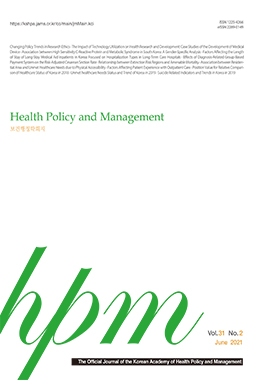Background: In Korea, the length of stay and medical expenses incurred by medical aid patients are increasing at a rate faster than the national health insurance. Therefore, there is a need to create a management strategy for each type of hospitalization to manage the length of stay of medical aid patients.
Methods: The study used data from the 2019 National Health Insurance Claims. We analyzed the factors that affect the length of stay for 186,576 medical aid patients who were hospitalized for more than 31 days, with a focus on the type of hospitalization in long-term care hospitals.
Results: The study found a significant correlation between gender, age, medical aid type, chronic disease ratio, long-term care hospital patient classification, and hospitalization type variables as factors that affect the length of hospital stay. The analysis of the differences in the length of stay for each type of hospitalization showed that the average length of stay is 291.4 days for type 1, 192.9 days for type 2, and 157.0 days for type 3, and that the difference is significant (p<0.0001). When type 3 was 0, type 1 significantly increased by 99.4 days, and type 2 by 36.6 days (p<0.0001).
Conclusion: A model that can comprehensively view factors, such as provider factors and institutional factors, needs to be designed. In addition, to reduce long stays for medical aid patients, a mechanism to establish an early discharge plan should be prepared and concerns about underutilization should be simultaneously addressed.




